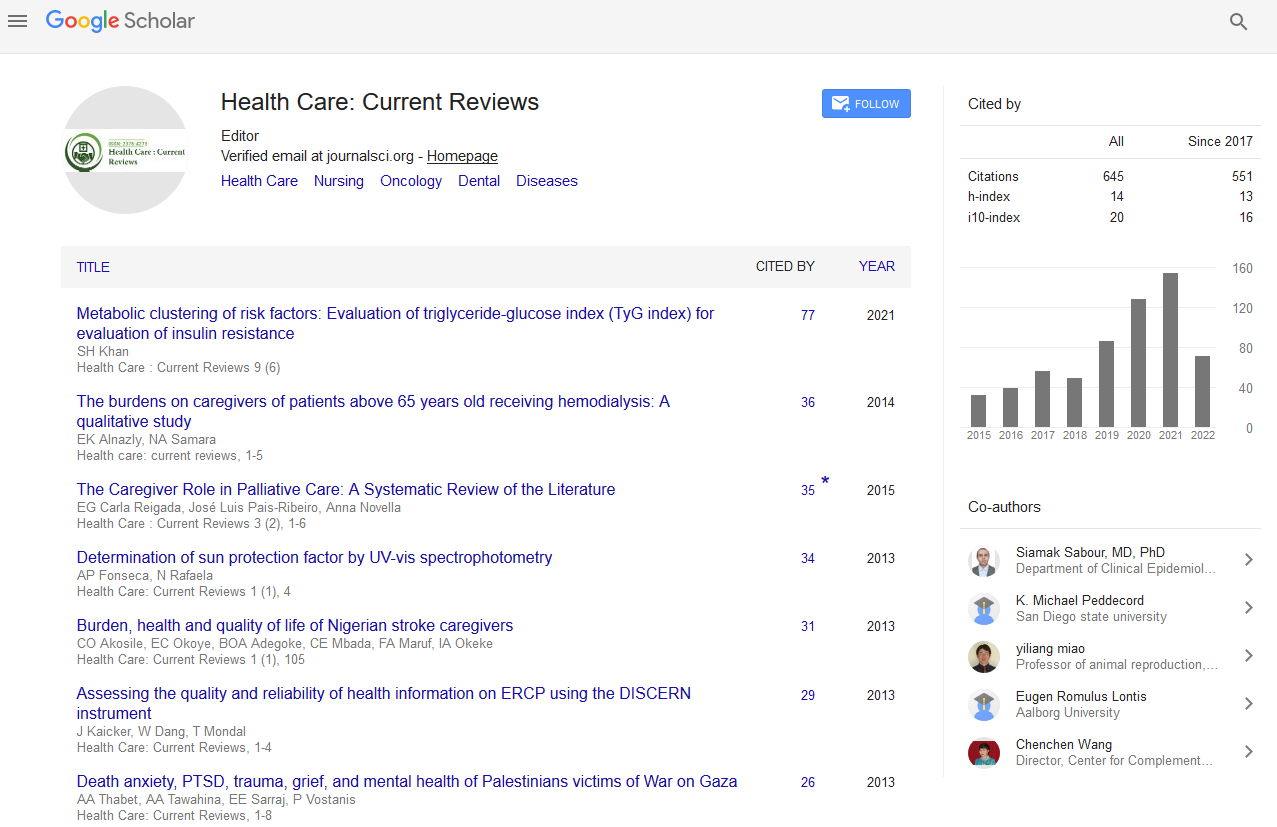PMC/PubMed Indexed Articles
Indexed In
- Open J Gate
- Academic Keys
- RefSeek
- Hamdard University
- EBSCO A-Z
- Publons
- Geneva Foundation for Medical Education and Research
- Google Scholar
Useful Links
Share This Page
Journal Flyer

Open Access Journals
- Agri and Aquaculture
- Biochemistry
- Bioinformatics & Systems Biology
- Business & Management
- Chemistry
- Clinical Sciences
- Engineering
- Food & Nutrition
- General Science
- Genetics & Molecular Biology
- Immunology & Microbiology
- Medical Sciences
- Neuroscience & Psychology
- Nursing & Health Care
- Pharmaceutical Sciences
Abstract
Factors Associated With the Concentration of Visceral and Subcutaneous Fat
Sabino Pinho CP, Alcides da Silva Diniz, Ilma Kruze Grande de Arruda, Ana Paula Dornelas Leão, EmÃdio Cavalcanti de Albuquerque and Isa Galvão Rodrigues
Background: The abdominal adipose tissue has deposits of subcutaneous and visceral fat, which, in excess, provides different risks to metabolic and hemodynamic changes. Objective: Assess factors associated with the concentration of visceral and subcutaneous fat.
Methods: Case series study involving 109 overweight outpatients in the Brazilian northeast. Visceral and subcutaneous fat was assessed by CT scans. Demographic and clinical covariates, lifestyle and body mass index (BMI) were analyzed.
Results: The average age was 50.3 (± 12.2) years. Men showed a higher concentration of visceral fat compared to women (p<0.001). In the multivariate analysis, the presence of arterial hypertension (AH), higher BMI and lower intake of protective food among men was associated with the highest concentration of visceral fat (adjusted R2: 46.4%) and AH, a higher education (in years), a higher BMI and lower consumption of oils and fats were significantly associated with subcutaneous fat (adjusted R2: 88.6%). For women, age, AH, high BMI and alcohol consumption were associated with VAT (adjusted R2=17.6%) and high BMI, high education, a higher consumption of fatty and processed meats and a lower consumption of simple carbohydrates were associated with SAT (adjusted R2: 69.3%).
Conclusion: Multiple different factors determine and their complex inter-relationships determine the amount of visceral and subcutaneous fat in men and women.


